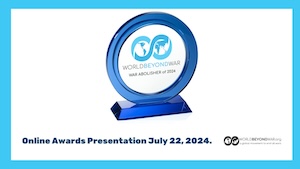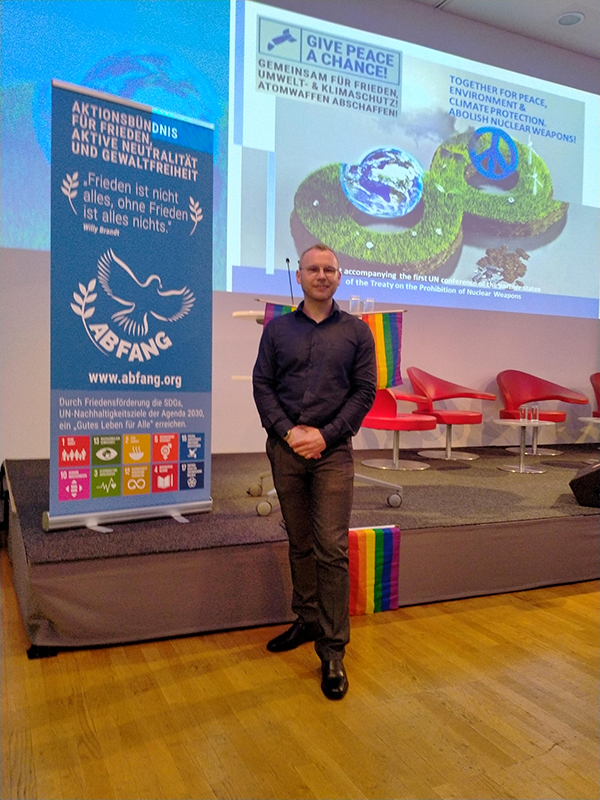
By Phill Gittins, World BEYOND War, July 2, 2022
Report on Events in Vienna, Austria (19-21 June, 2022)
Sunday, June 19:
Event accompanying the first UN conference on partner states of the treaty on the Prohibition of Nuclear Weapons.
This event was a collaborative effort, and included contributions from the following organisations:
- ICAN: International Campaign to Abolish Nuclear Weapons
- IIP: International Institute for Peace
- IPB: International Peace Bureau
- IPPNW: International Physicians for the Prevention of Nuclear War
- ITUC: International Trade Union Confederation
- WILPF: Women’s International League for Peace and Freedom
(Click here to access some photos from the event)
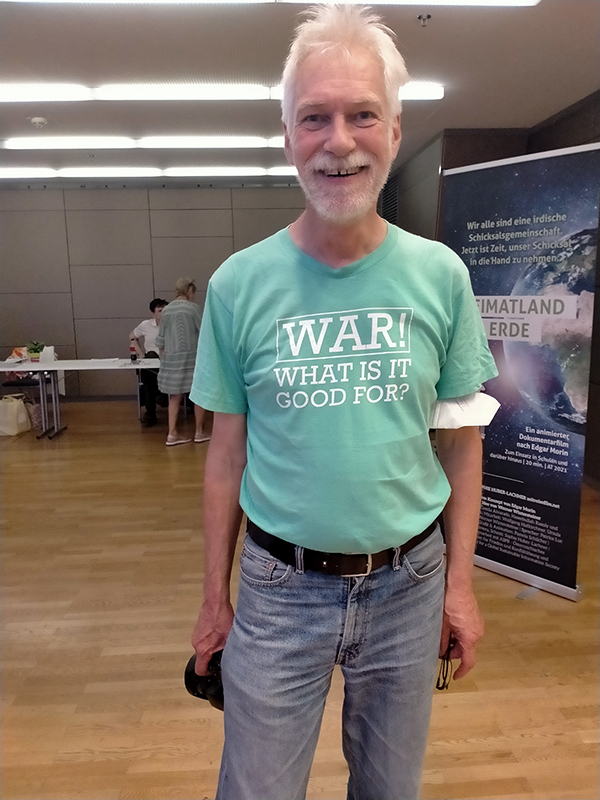
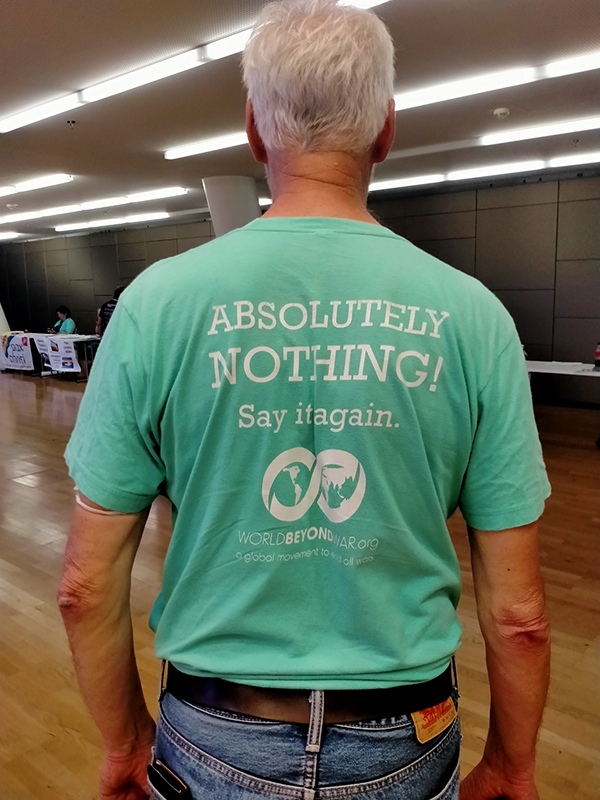
Phill participated in a panel discussion, that was streamed live and had simultaneous English-German translation. He started by introducing World BEYOND War and its work. In the process, he showed the organisational flyer, and a flyer entitled, ‘Nukes and War: Two Abolition Movements Stronger Together’. He then argued that there is no viable approach to sustainable peace and development without two things: war abolition and youth participation. In making the case for the importance of ending the institution of war, he gave a perspective on why war is development in reverse, before highlighting the mutually beneficial linkages between abolishing war and abolishing nuclear weapons. This provided the groundwork for a brief outline of some of the work WBW is doing to better engage youth, and all generations, in anti-war and pro-peace efforts.
The event included a range of other speakers, including:
- Rebecca Johnson: Director and founder of Acronym Institute for Disarmament Diplomacy as well as a co-founding strategist and organiser of the International Campaign to Abolish Nuclear Weapons (ICAN)
- Vanessa Griffin: Pacific Supporter of ICAN, co-ordinator of the Gender and Development programme of the Asia Pacific Development Centre (APDC)
- Philip Jennings: Co-President of the International Peace Bureau (IPB) and former General Secretary at Uni Global Union and the FIET (International Federation of Commercial, Clerical, Technical and Professional Employees)
- Prof. Helga Kromp-Kolb: Head of the Institute of Meteorology and of the Center for Global Change and Sustainability at the University of Natural Resources and Life Sciences, Vienna (BOKU).
- Dr. Phill Gittins: Education Director, World BEYOND War
- Alex Praça (Brazil): Human and Trade Union Rights adviser for the Trade Union Confederation (ITUC).
- Alessandro Capuzzo: Peace activist from Trieste, Italy, and one of the founders of the “movimento Trieste Libera” and is fighting for a nuclear-free port of Trieste
- Heidi Meinzolt: Member of WILPF Germany for more than 30 years.
- Prof. Dr. Heinz Gärtner: Lecturer in the Department of Political Science at the University of Vienna and at Danube University.
Monday-Tuesday, June 20-21
Vienna, Austria
Peacebuilding and Dialogue project. (Click here for a poster and more information)
Conceptually, the work aligns with WBW’s strategic goals of educating/engaging more people, more effectively, around anti-war and pro-peace efforts. Methodologically, the project is designed to bring young people together to develop and share knowledge and skills, and to engage in new dialogues for the purposes of strengthening capacities and cross-cultural understanding.
Youth from Austria, Bosnia and Hercegovina, Ethiopia, Ukraine, and Bolivia took part in this project.
Here is a brief summary of the work:
A note about the Peacebuilding and Dialogue project
This project was designed to bring young people together and equip them with conceptual and practical tools relevant to peacebuilding and dialogue.
The project involved three main phases.
• Phase 1: Surveys (9-16 May)
The project started with young people completing surveys. This helped to better contextualise the following activities by giving young people an opportunity to share their ideas on what they think they need to learn to become better prepared to promote peace and dialogue.
This phase fed into the preparation of the workshops.
• Phase 2: In-person Workshops (20-21 June): Vienna, Austria
- Day 1 looked at the fundamentals of peacebuilding, Young people were introduced to four key concepts of peacebuilding – peace, conflict, violence, and power -; the latest trends and trajectories in anti-war and pro-peace efforts; and a methodology for assessing global peacefulness and the economic cost of violence. They explored the connections between theory and practice by applying their learning to their context, and by completing a conflict analysis and an interactive group activity to make sense of different forms of violence. Day 1 drew on insights from the peacebuilding field, leveraging the work of Johan Galtung, Rotary, the Institute for Economics and Peace, and World BEYOND War, among others.
(Click here to access some photos from Day 1)
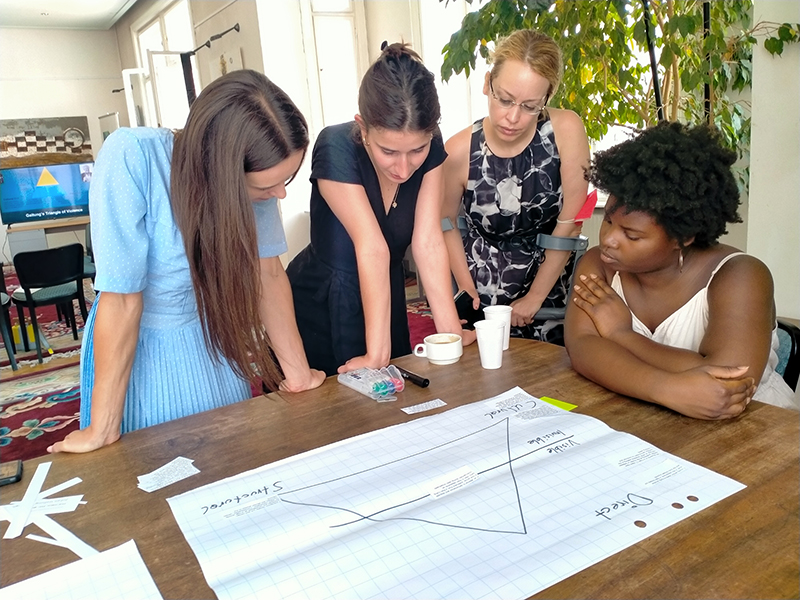
- Day 2 looked at peaceful ways of being. Young people spent the morning engaging in the theory and practice of active listening and dialogue. This work included exploring the question, “to what extent is Austria a good place to live?”. The afternoon turned to preparation for Phase 3 of the project, as participants worked together to co-create their presentation (see below). There was also a special guest: Guy Feugap: WBW’s Chapter Coordinator in Cameroon, who was in Vienna for The Treaty on the Prohibition of Nuclear Weapons (TPNW) activities. Guy gave copies of his co-authored book to young people, and spoke about the work they are doing in Cameroon to promote peace and challenge war, with a particular focus on work with young people and dialogue processes. He also shared how he enjoyed meeting the young people and learning about the Peacebuilding and Dialogue project. Day 2 day drew on insights from non-violent communication, psychology, and psychotherapy.
(Click here to access some photos from Day 2)
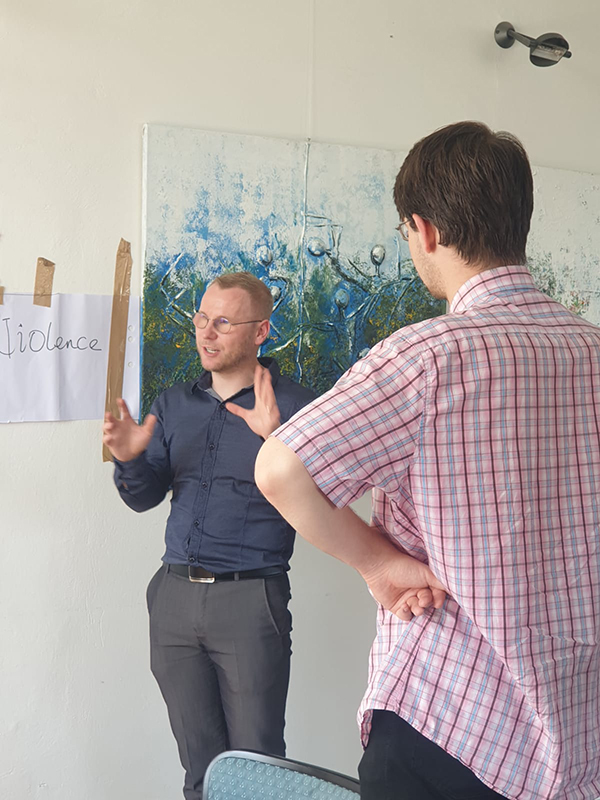
Taken together, the overall aim of the 2-day workshop was to provide young people with opportunities to develop knowledge and skills that are helpful to supporting their process of being and becoming peacebuilders, as well as their personal engagement with self and others.
• Phase 3: Virtual gathering (2 July)
Following the workshops, the project culminated with a third phase that included a virtual gathering. Held via zoom, the focus was on sharing the opportunities and challenges for promoting peace and dialogue processes in two different countries. The virtual gathering featured young people from the Austria team (made up of youth from Austria, Bosnia and Hercegovina, Ethiopia, and Ukraine) and another team from Bolivia.
Each team made a 10-15 presentation, followed by Q&A and a dialogue.
The Austrian Team covered a range of topics related to peace and security in their context, from the level of peacefulness in Austria (drawing on the Global Peace Index and the Positive Peace Index to a critique of peacebuilding efforts in the country, and from femicide to neutrality and its implications for Austria’s place in the international peacebuilding community. They stressed that while Austria has a high standard of living, there is still much that can be done to promote peace.
The Bolivian Team used Galtung’s theory of direct, structural, and cultural violence to give a perspective on gender violence and violence against (young) people and the planet. They used research-based evidence to support their claims. They highlighted a gap in Bolivia between rhetoric and reality; that is, a gap between what is said in policy, and what happens in practice. They finished by giving a perspective on what might be done to advance the prospects of a culture of peace in Bolivia, highlighting the important work of ‘Fundación Hagamos el Cambio’.
In summary, the virtual gathering provided an interactive platform to facilitate new knowledge-sharing opportunities and new dialogues among young people from different peace and conflict trajectories/social and political circumstances, across global North and South divides.
(Click here to access the video and some photos from the virtual gathering)
(Click here to access the PPT’s of Austria, Bolivia, and WBW from the virtual gathering)
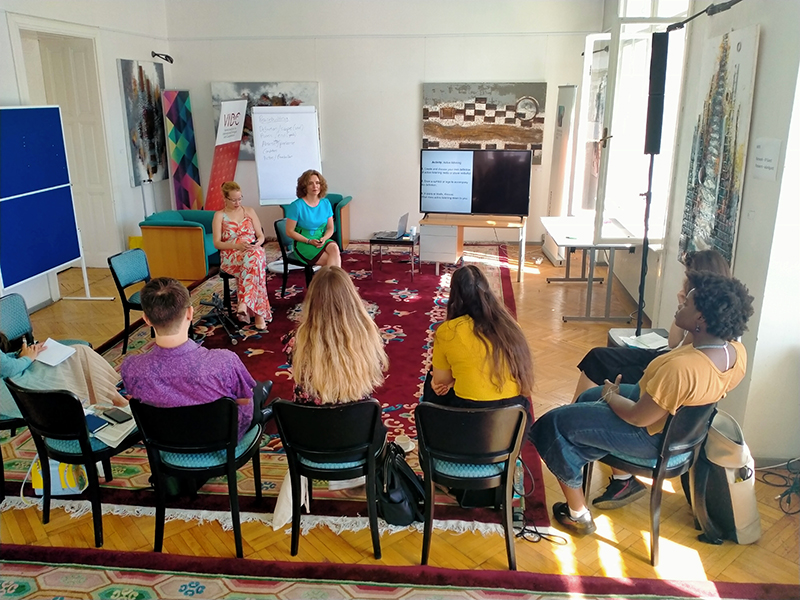
This project was made possible thanks to the support of many people and organisations. These include:
- Two colleagues, who worked closely with Phill to plan and carry out the work:
– Yasmin Natalia Espinoza Goecke – Rotary Peace Fellow, Positive Peace Activator with the Institute for Economics and Peace, and the International Atomic Energy Agency – from Chile.
– Dr. Eva Czermak – Rotary Peace Fellow, Global Peace Index Ambassador with the Institute for Economics and Peace, and Caritas – from Austria.
- The International Institute for Peace provided access to their building, for the workshops.
- The Costa Rican Embassy provided food and refreshments for the in-person workshops.
The project draws from and builds on previous work, including the following:
- A PhD project, where many of the ideas contained in the project were first developed.
- A KAICIID Fellow, where a specific variation of the model for this project was developed.
- Work done during the Rotary-IEP Positive Peace Activator programme, where many Positive Peace Activators, and Phill discussed the project. These discussions contributed to the work.
- A proof of concept project, where the model was piloted with youth in the UK and Serbia.

